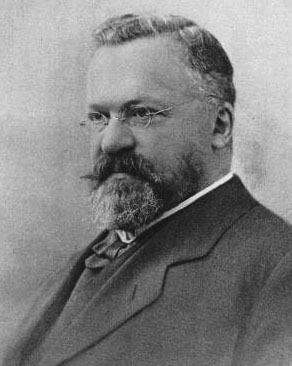Carl Swartz facts for kids
Quick facts for kids
Carl Swartz
|
|
|---|---|
 |
|
| Prime Minister of Sweden | |
| In office 30 March 1917 – 19 October 1917 |
|
| Monarch | Gustaf V |
| Preceded by | Hjalmar Hammarskjöld |
| Succeeded by | Nils Edén |
| Minister of Finance | |
| In office 29 May 1906 – 7 October 1911 |
|
| Prime Minister | Arvid Lindman |
| Preceded by | Elof Biesèrt |
| Succeeded by | Theodor Adelswärd |
| Personal details | |
| Born |
Carl Johan Gustaf Swartz
5 June 1858 Norrköping, United Kingdoms of Sweden and Norway |
| Died | 6 November 1926 (aged 68) Stockholm, Sweden |
| Political party | National |
| Spouse | Dagmar Lundström |
| Alma mater | Uppsala University, University of Bonn |
Carl Johan Gustaf Swartz (born June 5, 1858 – died November 6, 1926) was a Swedish right-wing politician. He served as the Prime Minister of Sweden for a short time in 1917. Before that, he was the Minister for Finance from 1906 to 1911. He was married to Dagmar Lundström and they had three children.
Contents
Carl Swartz: Early Life and Career
Carl Swartz was born on June 5, 1858, in Norrköping, Sweden. His father, Erik Swartz, owned a factory. After studying at Uppsala University in Sweden and the University of Bonn in Germany, Carl returned home. He took over his family's business, which made tobacco products.
Carl was very important in his hometown. He helped with many cultural activities. From 1912 to 1917, he was the chairman of Sweden's private Central Bank. In 1917, he also became the leader of the country's universities.
Becoming Minister of Finance
As the Minister of Finance from 1906 to 1911, Carl Swartz made important changes. He introduced new taxes on income and property. These taxes were "progressive," meaning people with more money paid a higher percentage.
In 1912, different right-wing groups in the Swedish Riksdag (the Swedish parliament) joined together. They formed a new group called the Nationella Partiet (The National Party). Carl Swartz became a key member of this new party.
Carl Swartz and World War I
During World War I, Carl Swartz played a big role in the Riksdag. He was the chairman of a special committee that handled supplies for the country. This was from 1915 to 1917.
Becoming Prime Minister
The government at the time, led by Hjalmar Hammarskjöld, faced many problems. It was under pressure from other countries and had disagreements within itself. So, King Gustaf V asked Carl Swartz to become the new Prime Minister. Carl accepted this job more out of duty than because he really wanted it.
The new government's main goal was to calm down the middle-class people. They were worried that the February Revolution in Russia might cause similar problems in Sweden. This was especially true as May 1, 1917, approached.
Carl Swartz was known as a calm and sensible conservative leader. He was like an old-fashioned factory owner who thought things through carefully.
Handling Public Unrest
Before the May 1, 1917, demonstrations, Carl Swartz made an important decision. He stopped private groups from forming their own armed forces. In return, the Swedish Social Democratic Party promised to help keep order during the protests. This agreement helped prevent bigger conflicts and a serious political crisis in Sweden.
People were mostly upset because they were very hungry. There were "hunger riots" happening, not just protests for voting rights. The situation improved when the potato harvest began in early summer. Carl Swartz also quickly made deals with countries like Great Britain. These deals allowed Sweden to import goods from the west, which the previous government had stopped.
Changes in Voting Rights
The Social Democrats used the hunger riots to push the government for changes. They demanded things like universal suffrage (everyone being able to vote) and women's suffrage (women being able to vote). They also wanted to remove a special voting system in local elections.
The government was divided on these issues. Some ministers agreed with the Social Democrats and Liberals. They even threatened to resign if Carl Swartz didn't agree. Carl Swartz felt a lot of pressure. He decided to wait for the spring election to let the people choose. This was a historic moment. He was the first conservative leader to follow the idea that the people, not the king, should choose the government.
King Gustaf V tried to avoid this shift to a more parliamentary system. He wanted Carl Swartz to continue as Prime Minister, even after the left-wing parties won the 1917 election. However, a problem involving Carl Swartz's son and some rules about food supplies during the war made it impossible for him to stay.
Carl Swartz: Legacy and Death
Carl Swartz was also a respected local leader and a very generous person. In 1912, he gave his home, Villa Swartz, to the town of Norrköping. It became a place for a library and a museum. Carl Swartz passed away in Stockholm on November 6, 1926.
See also
 In Spanish: Carl Swartz para niños
In Spanish: Carl Swartz para niños

